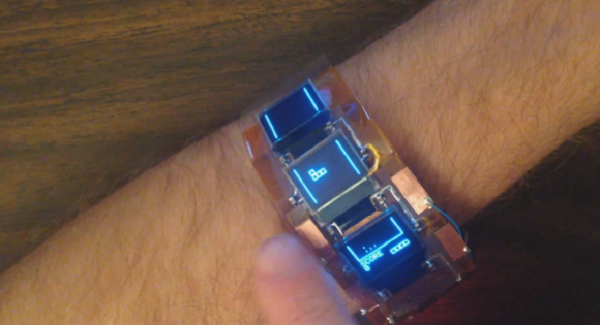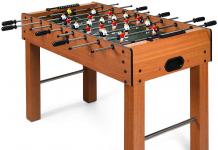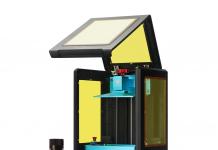Wearables are great for fitness and sleep tracking apps, but not many developers regard them as a fine platform for gaming. Kevin from Arduboy, the creator of a bracelet that lets you play Tetris, is convinced of the contrary.
SWIP3 was the first game developed for Android Wear, and considering that it was launched almost a month after the first Android Wear smartwatches became available, some could say that it took the developers quite a lot of time. That game was simple and addictive, but some of us grew up playing Tetris on handhelds such as the Brick Game, and would very much like to see some of these classic games on today’s wearables. The fact that the Ardubracelet is made by an enthusiast and is not a mass-produced thing makes it even more appealing.

As mentioned before, the Ardubracelet was brought to life by Kevin from Arduboy. Both the name of the device and of the main project suggest that it’s everything about Arduino micro-controllers. This particular bracelet includes the same chip as the Arduboy, an Atmega328p. It packs 3 OLED screens that were attached to a flexible circuit board in a beautiful, minimalistic design. To be frank, this wearable is a bit flashy, but upon taking a closer look at it and understanding why it’s so bright, people will surely give you a wink and a nod.
As with most smartwatches and smart bracelets, the Ardubracelet comes with a touchscreen surface, which is a much better alternative to hardware buttons. With that also comes a downside, a slightly smaller battery life. The included battery keeps the bracelet up and running for a maximum of 10 hours. I would’ve said that it’s more than a work day’s worth, but you probably shouldn’t play Tetris at work.
Kevin admits that there’s still some room left for improvements, especially since this is only a prototype. He says that with a bit of work the Ardubracelet could get thinner and more fashionable. I find it quite stylish as it is, but some changes wouldn’t hurt. A new iteration with some 3D printed parts should be ready in the not-so-distant future. Kevin is also looking to replace the current Atmega chip with an alternative that combines the microprocessor and a Bluetooth sensor. That will definitely be something!
Be social! Follow Walyou on Facebook and Twitter, and read more related stories about the augmented reality Tetris Kinect hack, and the Hasbro brain that mixes Jenga with Tetris.










